Medellín, Colombia
Medellín again! I was quite excited to be coming back to this bustling city. My initial plan was to spend two weeks here and do an intensive Spanish course. I ended up really enjoying it and extending an extra week. I liked the feeling of progress and I also found myself appreciating a daily routine, something resembling “regular life”. I made breakfast every morning. I had my usual places for coffee and dinner. I knew my “commute” well enough to be able to zone out.
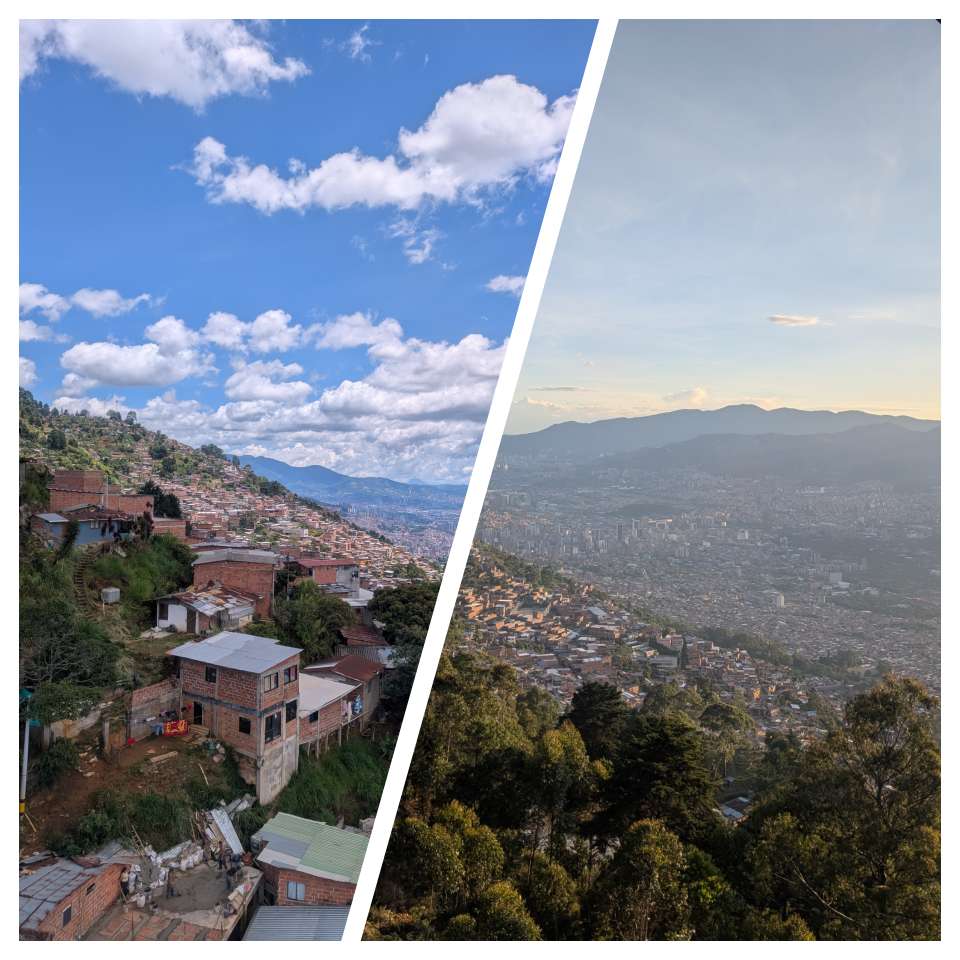
I wanted to immerse myself into the Spanish language as much as I humanly could, which made my days feel quite intense. I often listened to a beginner Spanish podcast on my way to my language school. I started with three hours of group conversation lessons in the morning, followed up by two hours of private lessons in the afternoon. By the end of this my brain was pretty fried. I always walked for at least half an hour afterwards, sometimes more, vaguely heading either home or to a cafe. After arriving at my destination I’d often end up taking out my notebook again and practicing everything I’ve just learned that day.
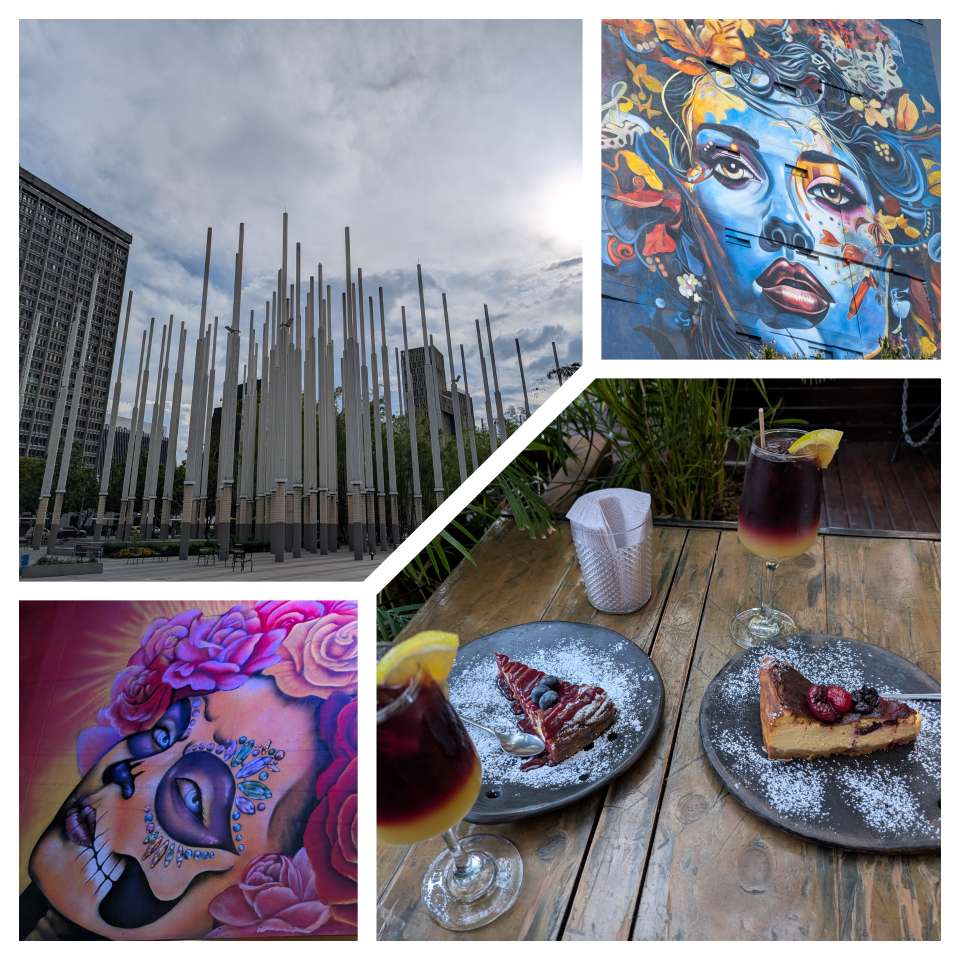
Between all of the above I also tried to jump on any opportunity to practice speaking. I attended countless language exchange evenings in different locations. One of the more unusual ones was an evening where a language exchange was followed up by a beginner bachata class. I never danced bachata before, and this was certainly outside of my comfort zone. I won’t claim I didn’t find it mildly nerve-wracking, anxiety-inducing and at times awkwardly intimate, but I also found myself having fun. This is also where I met Will, my closest friend in Medellín.
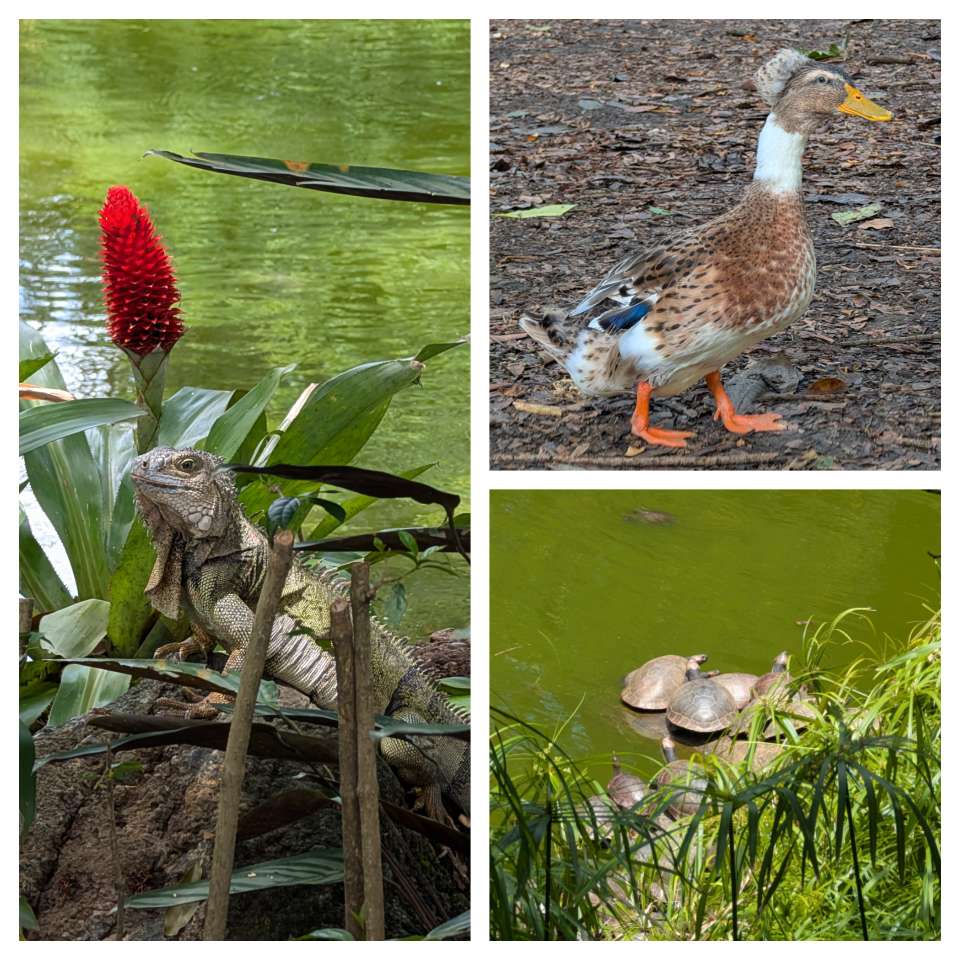
In my downtime I visited all the green spaces I could. Parques del Río was the closest and the most common. I absolutely fell in love with the Jardín Botanico and its iguanas. And I had a great time at Parque Arví, where I met a nice older tree-hugging Paisa lady, who was very keen to chat with me. She spoke no English, but was very patient with my Spanish. We ended up walking together for hours, and eating strawberries with cream.
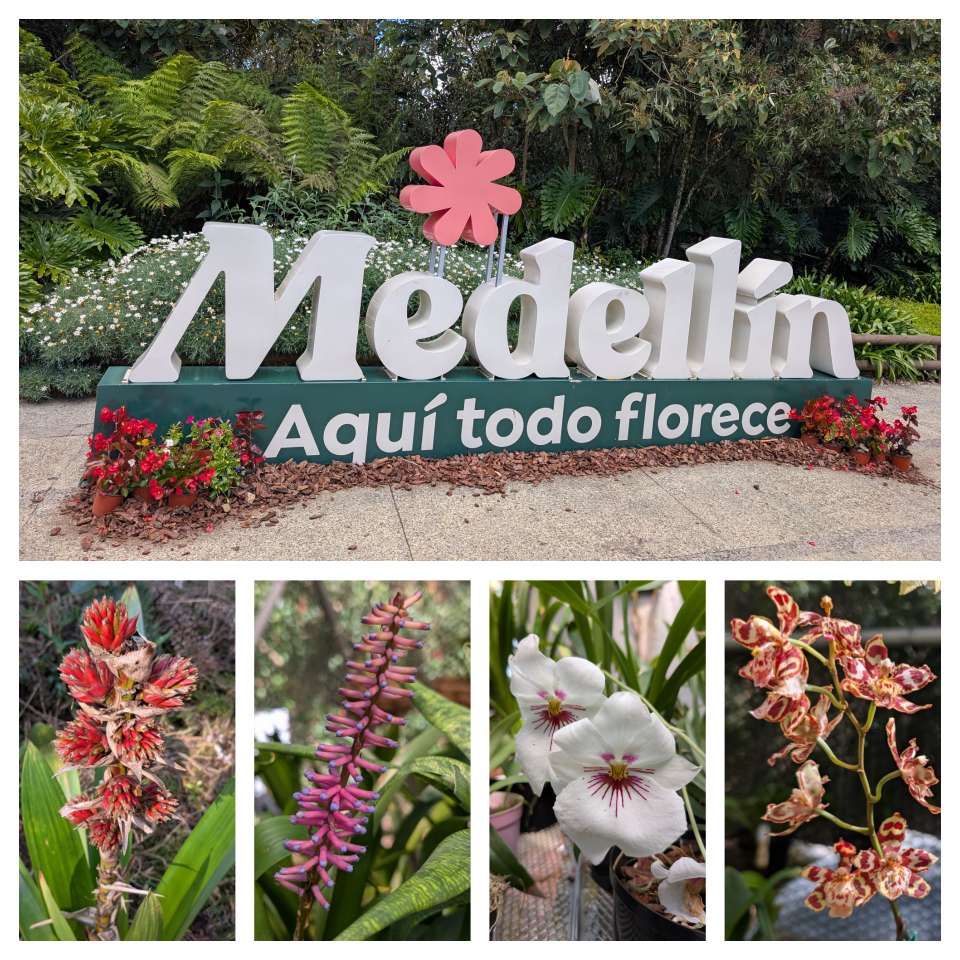
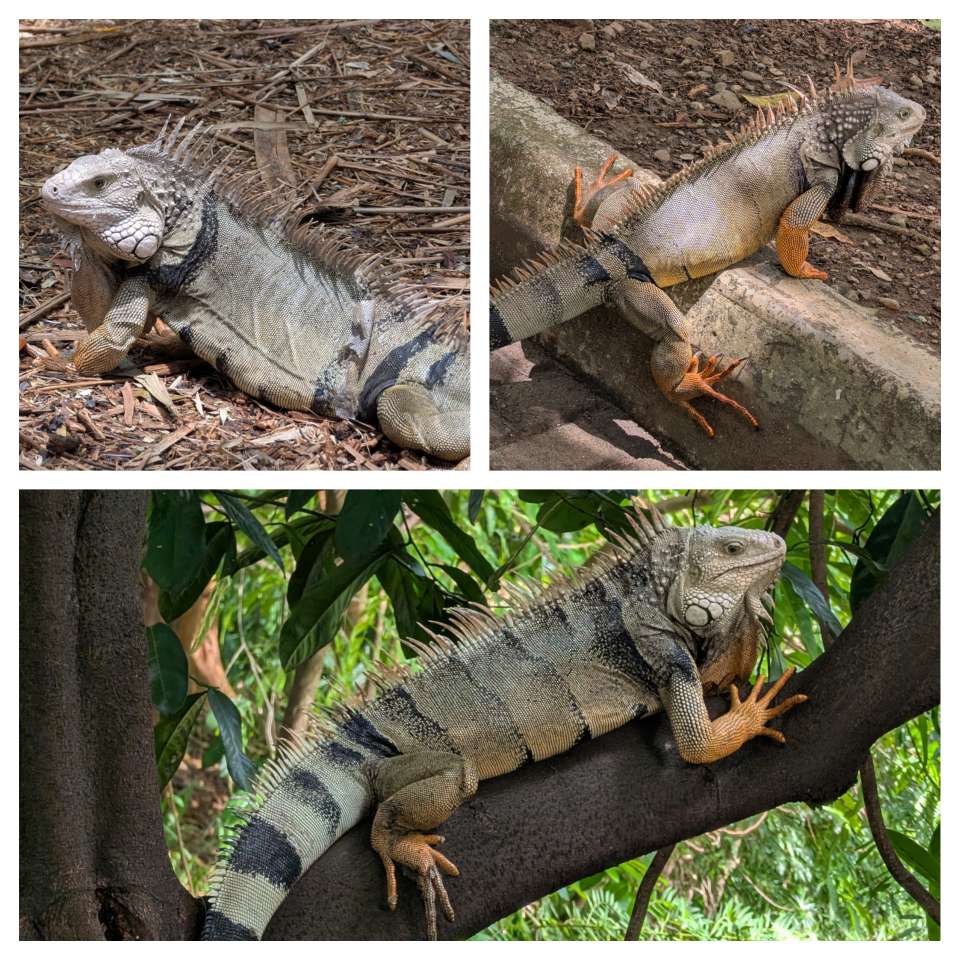
By the end of the three weeks I started feeling like I’ve formed a small community around myself. I found myself feeling a little sad to be leaving it behind for good. I ended up staying two more days just to give myself the time to say goodbye. I attended my favorite language exchange for the last time. Will and I spent my ultimate day visiting the University of Antioquia Museum, the Planetarium, had dinner at a great Italian restaurant and finished with a few drinks at the BBC. Disappointingly, Jardín Botanico was closed that day.
Finally, the time came to pack my bag again, and I took a bus to Guatapé.
Guatapé, Colombia
The two hour bus ride to Guatapé flew by whilst I was chatting to Luz, an older lady sitting next to me. I found myself genuinely enjoying these random conversations with local strangers, not only because it was a great way to practice my Spanish. I can’t help but think that this would have never happened back home, I’d wear headphones and simply be too absorbed in myself to have a conversation with a stranger like this. It’s been a nice reminder that life can be a little different.
Guatapé was charming and relaxed. It was similar to the towns in Eje Cafetero. It was small, the houses were colorful, and as a bonus it had a little promenade on the lake. I only stayed here for one night, but I was very glad I did. Once the day-tripping crowds had left, I felt I had this cute town all to myself.
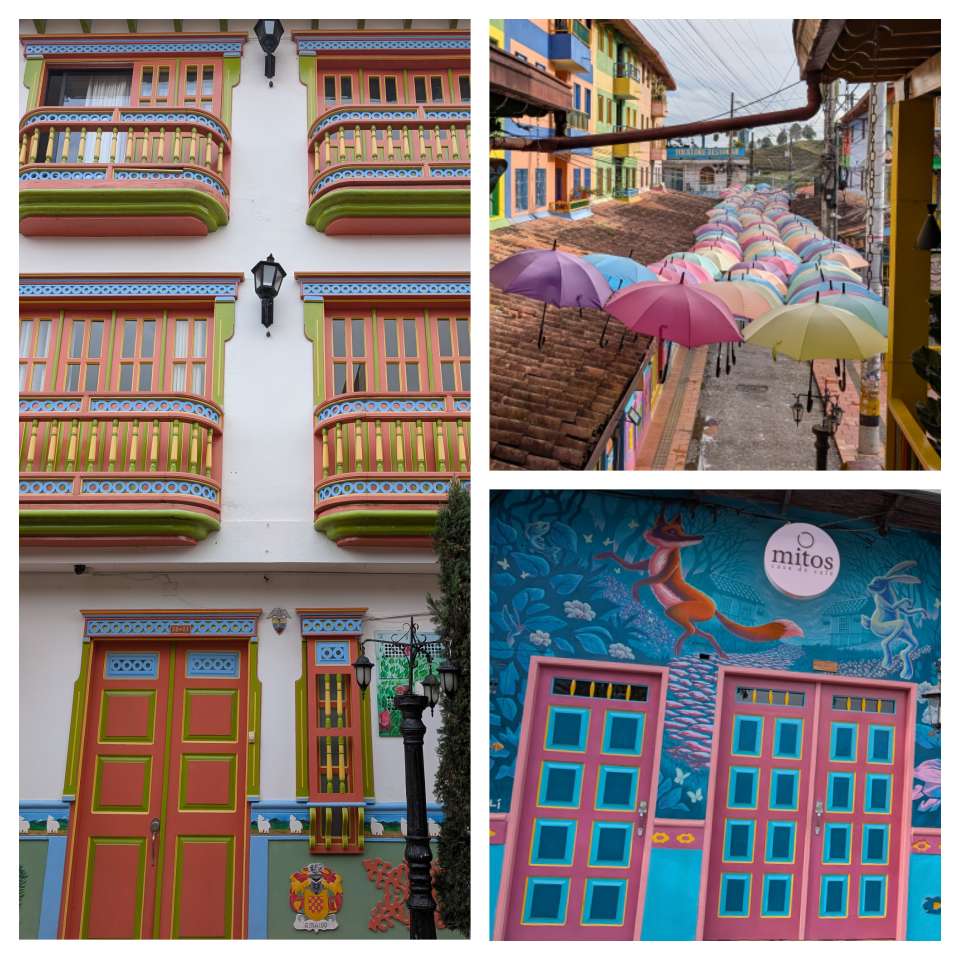
The main draw of Guatapé is La Piedra del Peñol. It’s one of the largest monoliths in the world, and it’s possible to walk up a rickety looking staircase to get to the top. I decided to do this early in the morning to avoid both the sun and the crowds. I was pleasantly surprised to realize the stairs are sturdier than they seem from afar. The view from the peak was beautiful and definitely worth the effort.
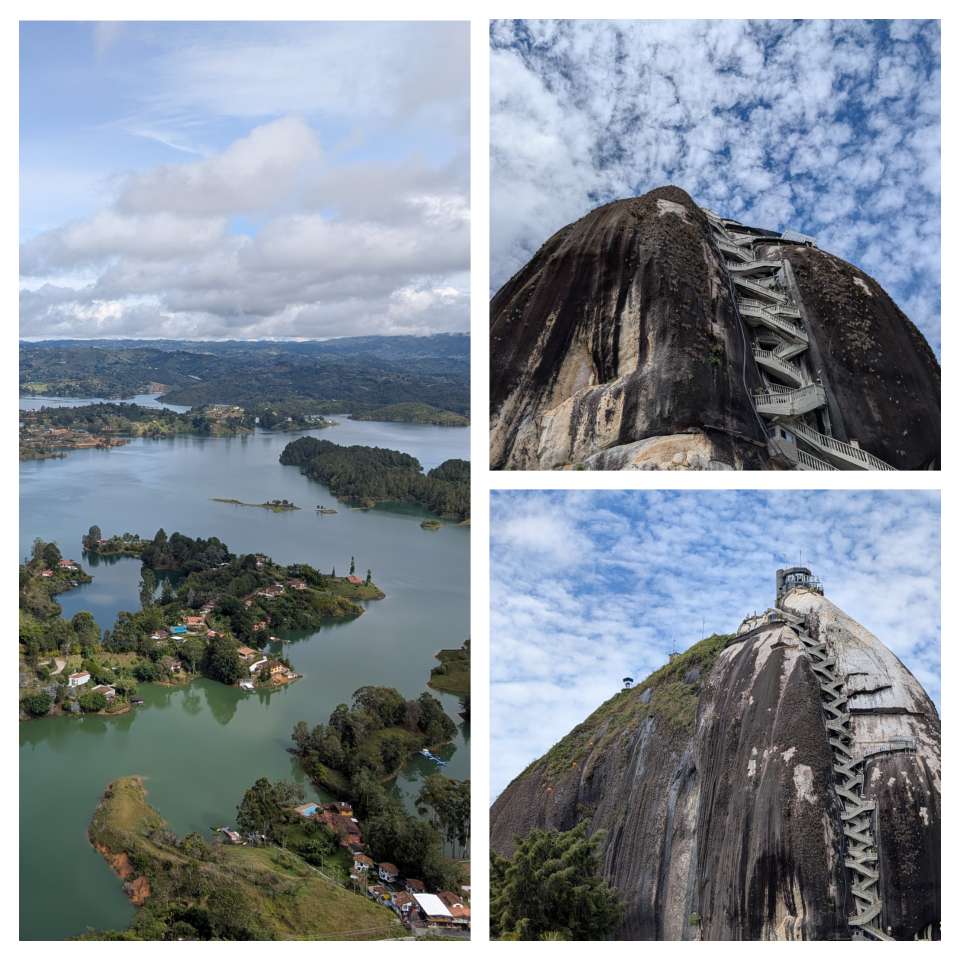
When I started noticing more and more people arriving below I decided that was my cue to leave. I went back to Guatapé and spent a bit of time by taking a boat tour on the lake. I knew I had a long journey before me, because I was heading back to Medellín, and then taking an overnight bus to Bogotá. However, I made a brief stop at the town of El Peñol and met up with my bus friend Luz, her cousin and her friend for a coffee and a little snack. I was a little nervous meeting these three strangers whom I had little in common with, but I figured in the worst case it would make for a funny story. And I wasn’t wrong. The most hilarious part ensued when I tried to explain that where I come from cheese is not a regular or a desired ingredient in a fruit salad.
I took a bus back to Medellín, had a quick dinner in my favorite restaurant, and made it just in time for my night bus to Bogotá. It looked quite comfy, if only the chairs reclined a little more. I was happy I managed to sleep most of the way, even though I woke up often.
Bogotá, Colombia
Bogotá was… stressful, chaotic and frustrating. I spent two days here, and honestly I couldn’t wait to leave. No matter what journey I was trying to take, I’d end up sitting in some form of transport for at least 45 minutes. I felt I spent more time inside buses (and occasionally taxis) than doing anything else. I even tried a moto taxi once, as it was meant to be cheaper and faster, but concluded that it’s faster for the wrong reasons (i.e. total disregard for any rules and safety). Bogotá desperately needs some form of trains to exist, because the traffic is completely out of control, and adding more lanes ain’t gonna help. The single metro line that’s currently being built seems about a decade or two too late.
When I wasn’t sitting in buses, I took a cable car up to Monserrate. It was a nice viewpoint, but nothing more.
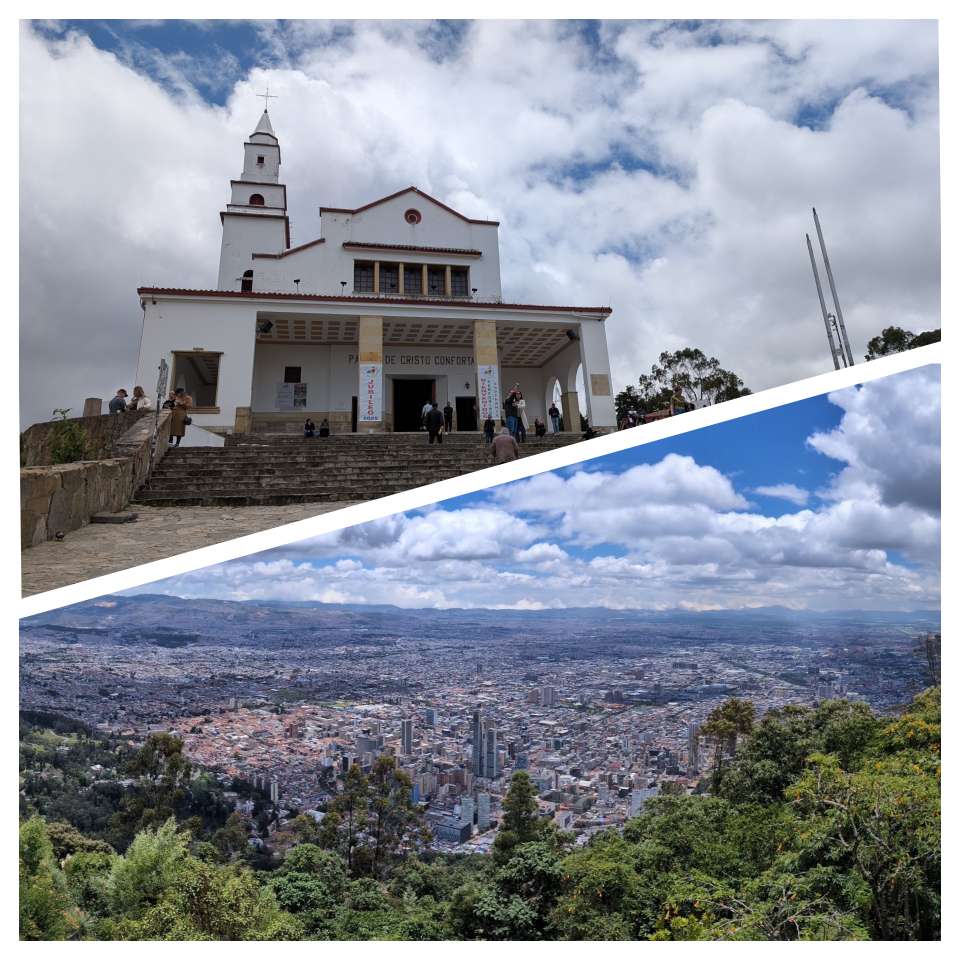
I followed this up by going to Museo del Oro, which displayed pre-Hispanic gold pieces and explained how they were made, and what purpose they served. This was absolutely my favorite thing about Bogotá. I was completely blown away by the things I learned and saw. The audio guide was really well done, and the displayed craftsmanship was genuinely astonishing.
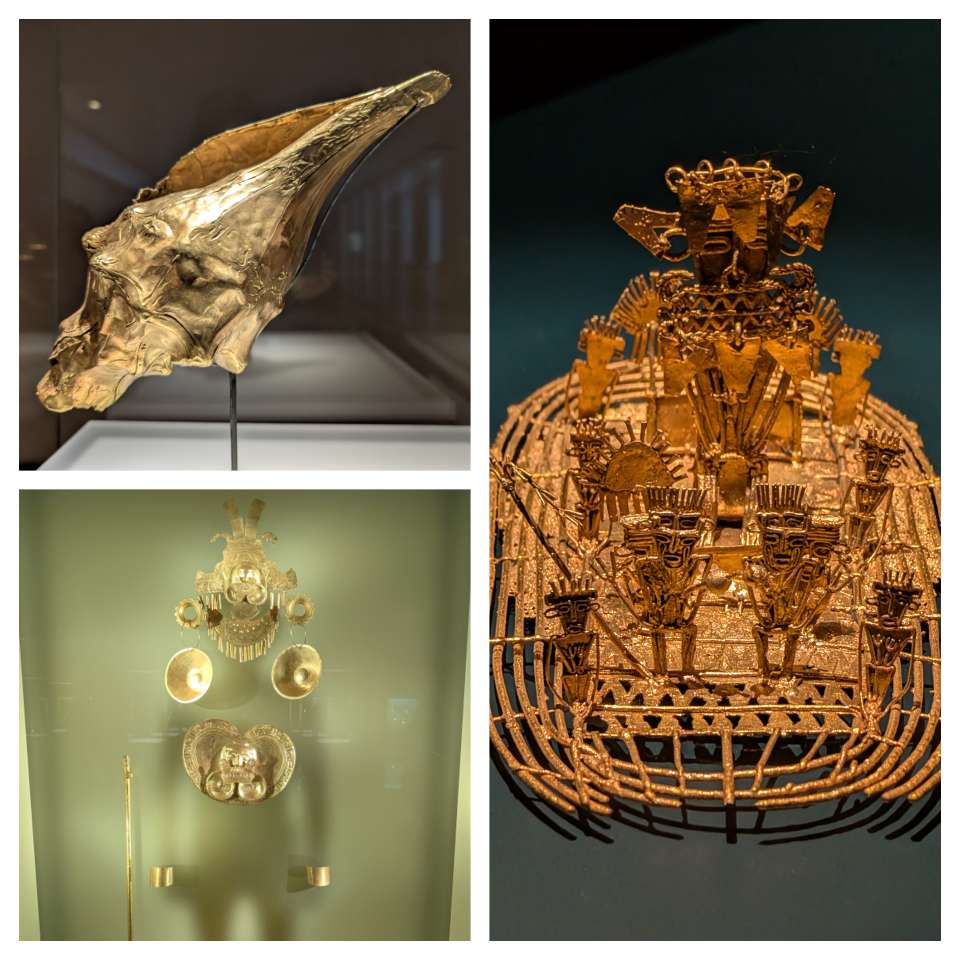
On my second day in Bogotá I decided to take a day trip out of the city. I’ve heard locals praise the Catedral de Sal in Zipaquirá, and I decided I should go see it. Stubbornly I thought I could definitely get there by myself, and I didn’t need to pay loads of money for a tour just because I don’t know how to take a bus. This was a bit of a gamble, there wasn’t loads of information online, and just getting to what I thought was the departure bus terminal would take over an hour. I tried to ask multiple locals for advice, but none of them were very helpful (so different from Medellín!). Luckily, it turned out I was right, and I was feeling pretty smug about all this working out.
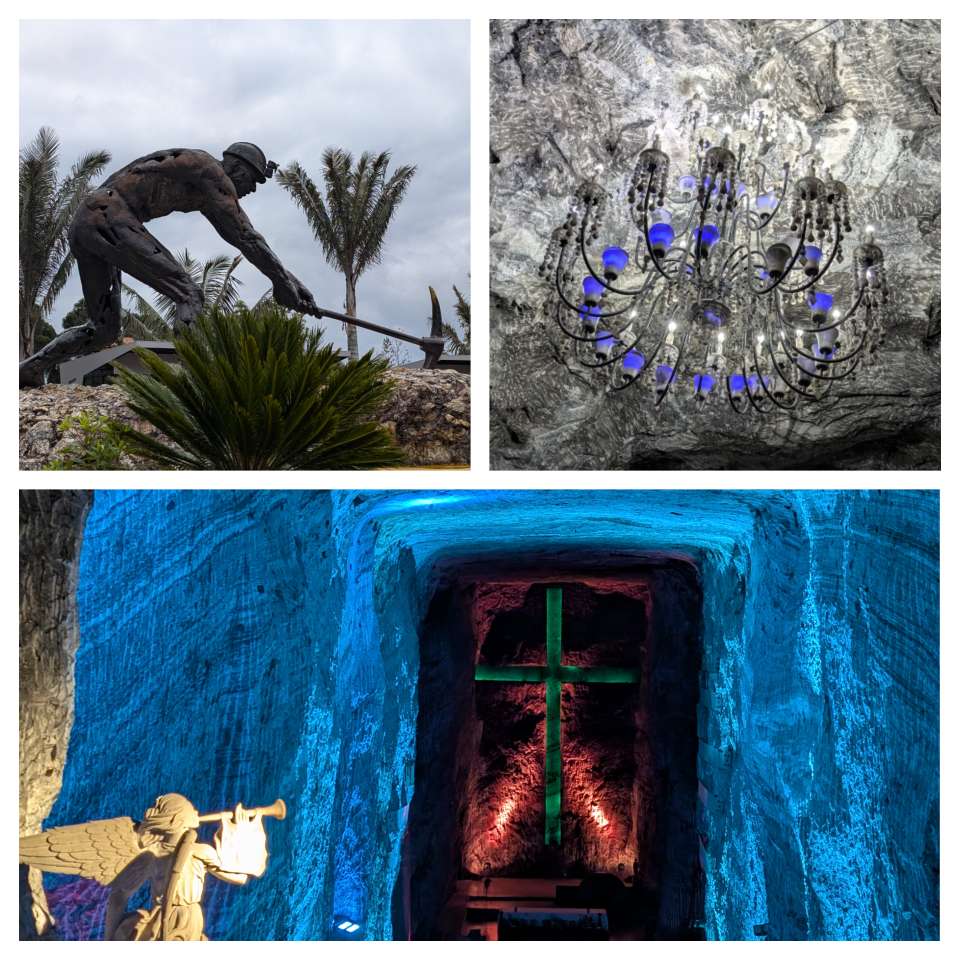
The cathedral was built in the tunnels of a salt mine 200m underground. It was very unusual and kind of beautiful, unlike any I’ve seen before. I’d describe the 14 chambers depicting the Stations of the Cross as very contemporary art. Each of the chambers only contained a cross, which was ever so slightly different every time, and the creators ascribed a lot of meaning to these differences. The temple at the end was the most impressive part of the experience.
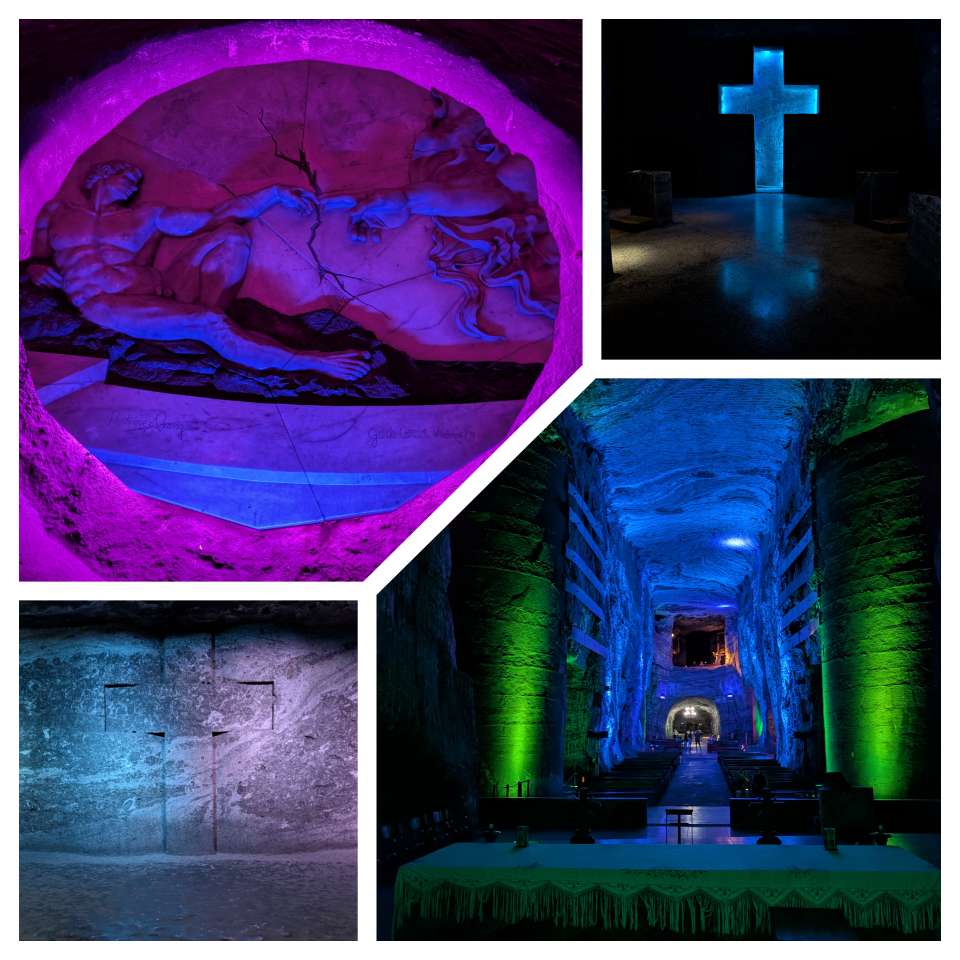
Once my visit to the cathedral finished, I also briefly visited a little archeological museum, which was included in my ticket. Finally, my day finished by taking a bus back to Bogotá again.
The following morning I headed to Villa de Leyva. Conveniently, I was already familiar with the right bus terminal.
Villa de Leyva, Colombia
As I arrived in Villa de Leyva I immediately felt more relaxed. This sleepy town was full of whitewashed buildings, hanging flower baskets, cobbled streets, nearly no cars and it was surrounded by greenery. Just what I needed after Bogotá.
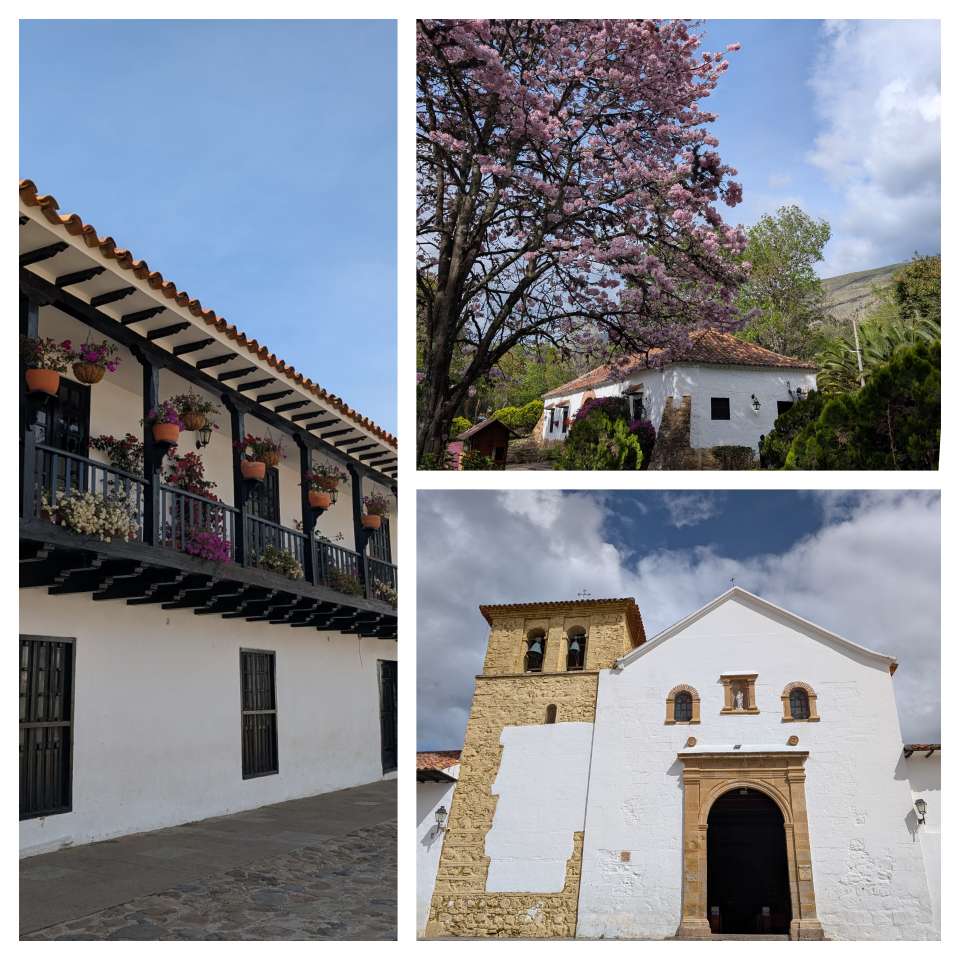
It took some serious effort to not just laze around in a hammock all day. Instead, I walked across Villa de Leyva a lot, including to a viewpoint just above the town. After being stuck in buses for so long it was nice to stretch my legs again.
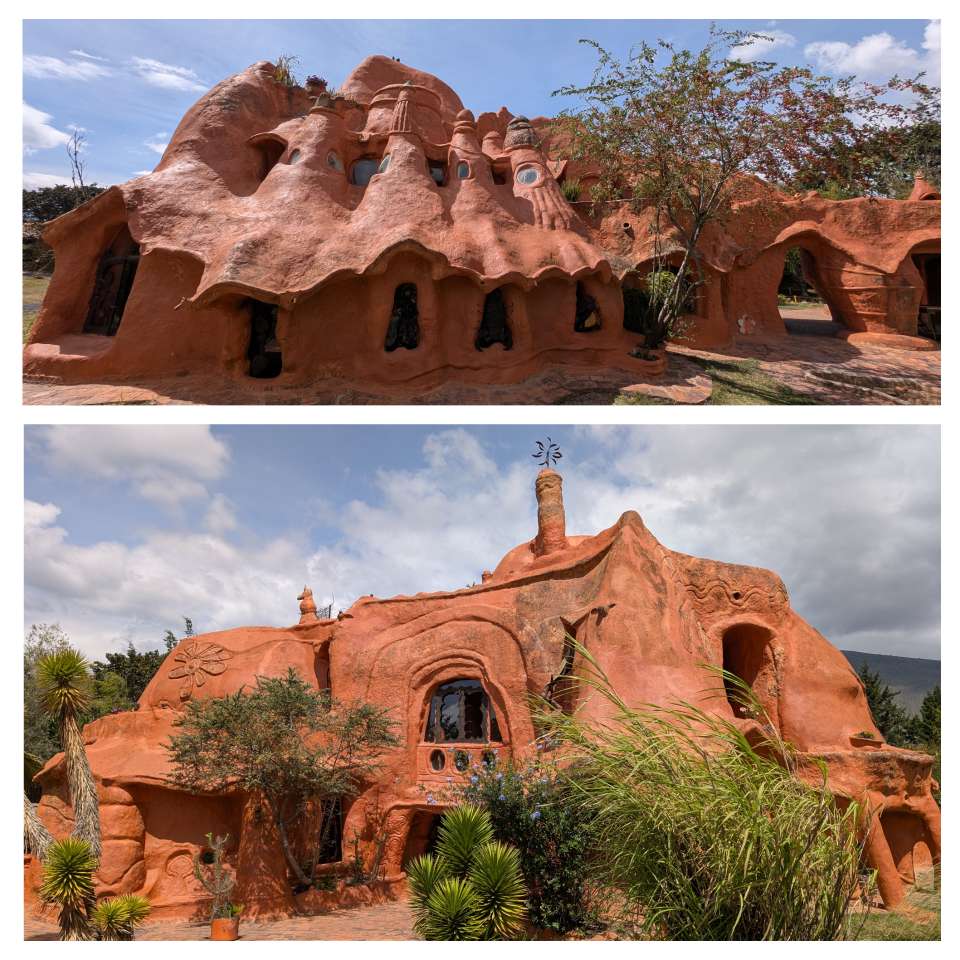
Apart from being the embodiment of what it means to be laid back, there was something else that charmed me in Villa de Leyva. I visited Casa Terracota, and it was a delightful and quirky little house. The attention to detail displayed by the artist, Octavio Mendoza Morales, made me feel so much joy. I marvelled at all the various lampshades, hand rails, ceilings, and windows. Nothing seemed ordinary. Casa Terracota seemed similar to Gaudi’s work, except with natural materials and in Colombia.
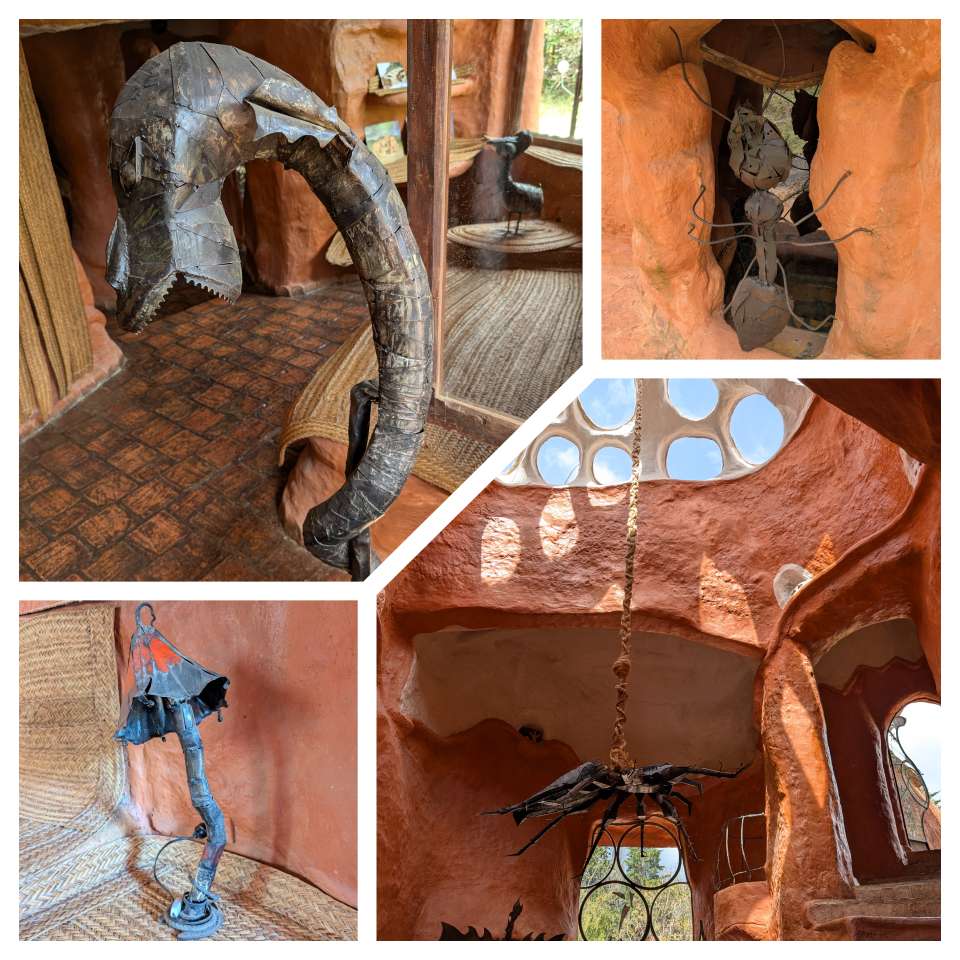
But that’s not even all! Besides Casa Terracota, Villa de Leyva also had a brilliant little archeology museum. It housed a few fossils, but the most important one was “El Fósil”, a well preserved Monquirasaurus, an impressive short-necked and large-headed underwater predator from more than 120 million years ago. The skeleton was kept at the exact spot where it was discovered, and the museum was built around it. I couldn’t stop myself from imagining what it would be like to encounter this monster when scuba diving, and the one thought that kept coming up in my mind was: simply terrifying.
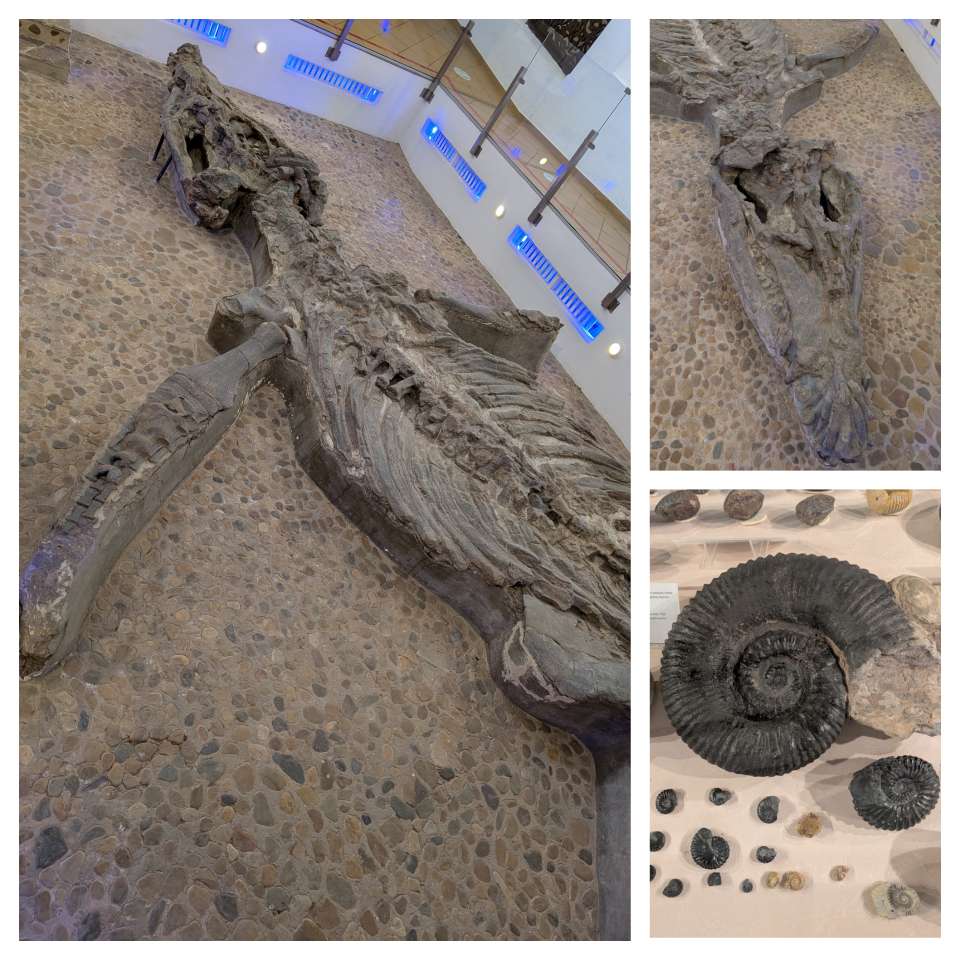
After spending two wonderful days in Villa de Leyva, my next stop was going to be San Gil.
San Gil, Colombia
For most people San Gil is known as the adventure town. If you like extreme sports, this is the place to be. For my adrenaline hit I decided to go paragliding over the Chichamocha Canyon, an experience which I thoroughly enjoyed. I’ve paraglided once before in my life, but it was nothing like this. We were lucky with the air currents, and managed to enjoy beautiful dramatic views of the valley from far above it. In addition, my pilot was also happy to do a few acrobatic tricks, which was super fun.
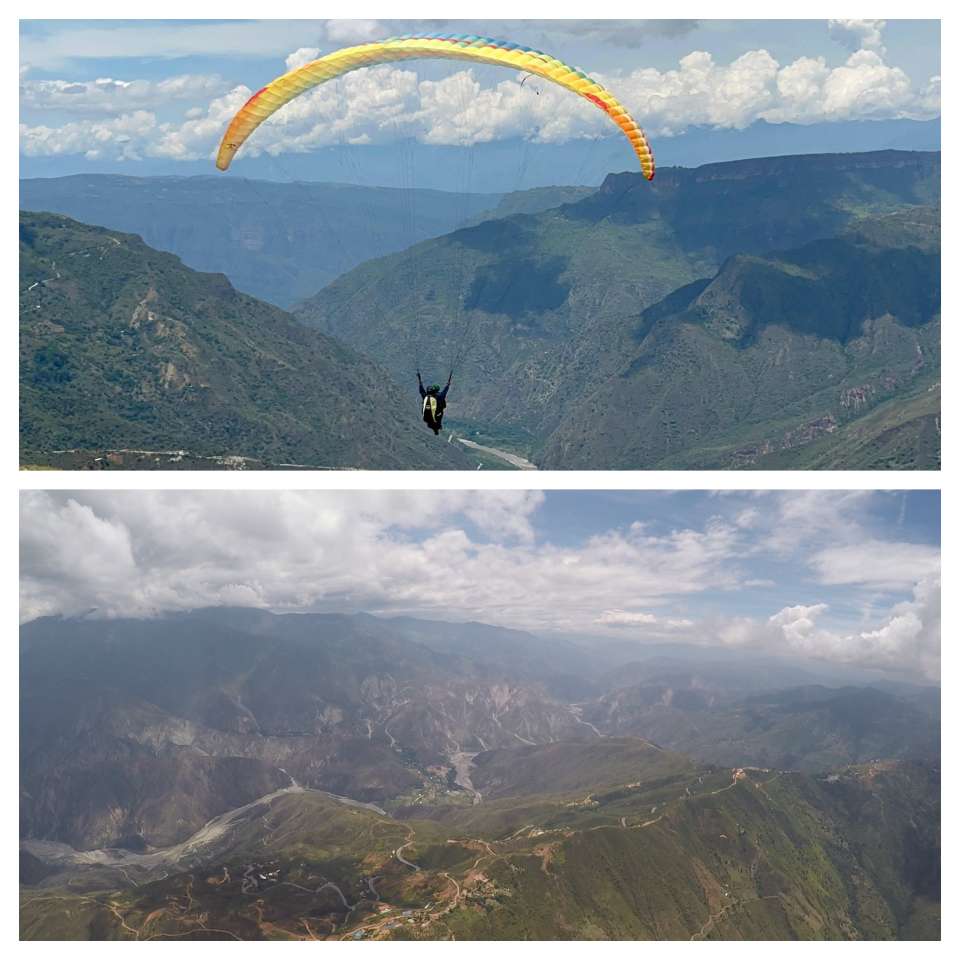
This was the only extreme activity I did, I still wanted to spend a bit more time in nature and relaxing. I wandered around Parque Natural El Gallineral and read my book.
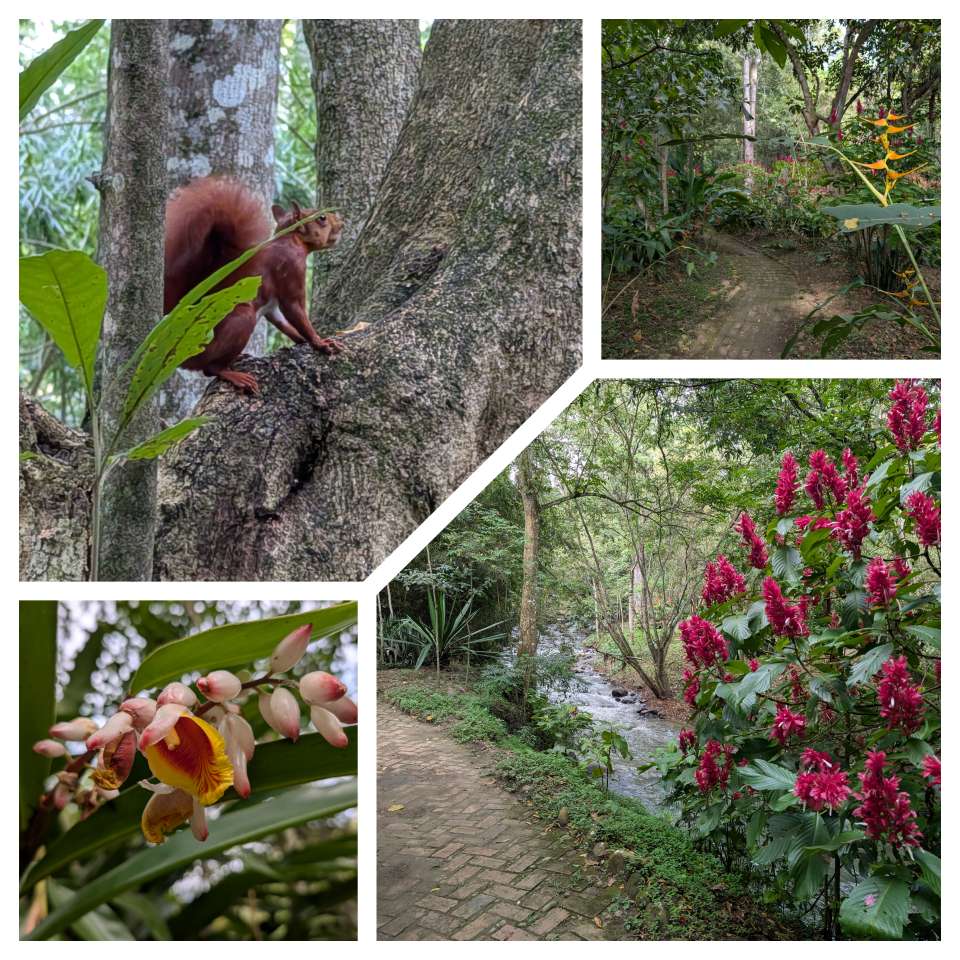
I also spent a day in Barrichara, a beautiful little colonial town not far from San Gil. I hiked the Camino Real between Barrichara and Guane, a tiny village with a nice square and a church, and about six more streets in total. I really enjoyed the scenery so I decided to also hike the route back. At this point around noon the risk of sunburn was high, but thanks to many layers of sunscreen I managed to escape with only minor burns on my shoulders. Worth it.
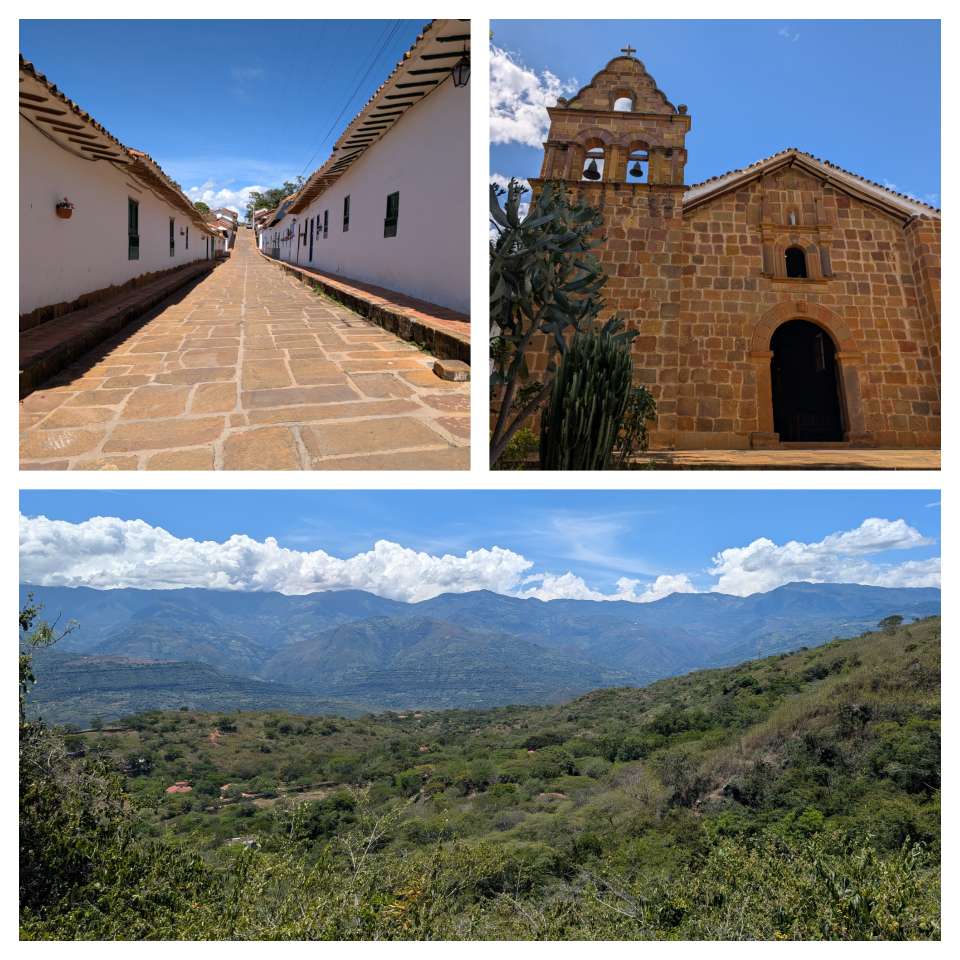
On my final day in San Gil I took a short bus, and then walked to the Juan Curí waterfall. I also wandered around the small town of Charalá for a while.
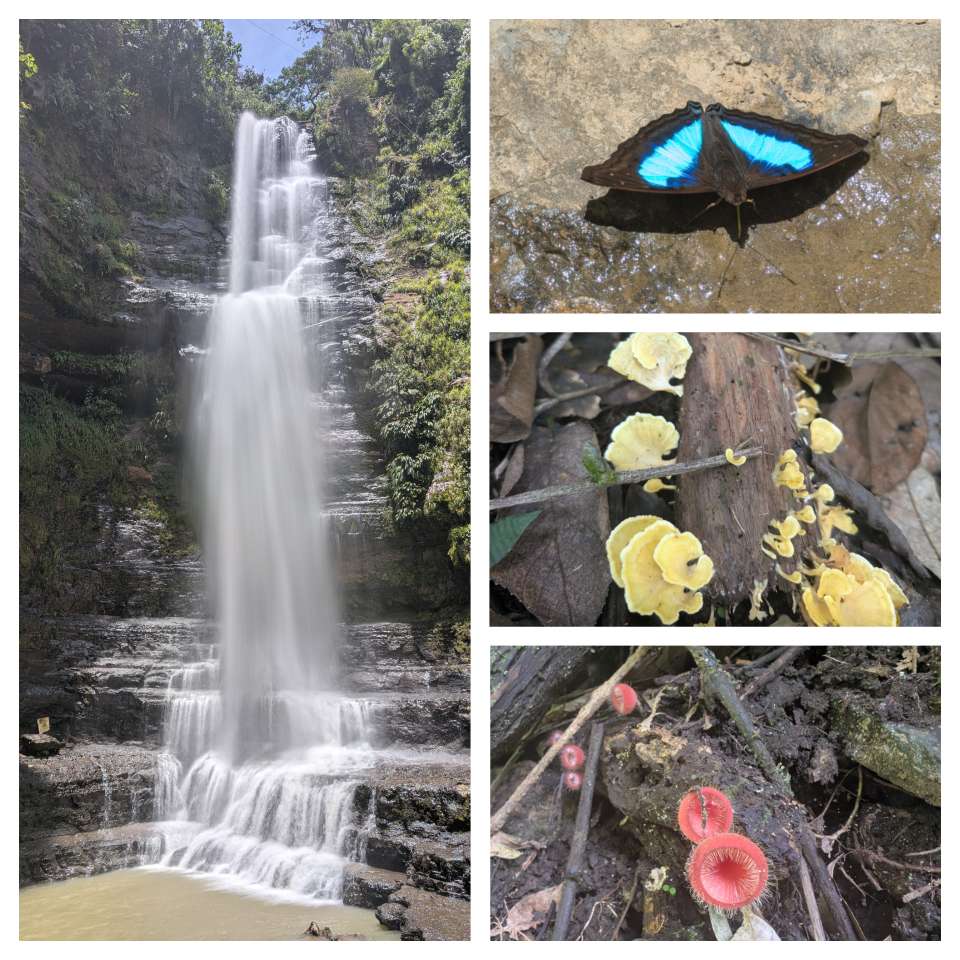
Bucaramanga, Colombia
In my mind San Gil was my last stop in Colombia. Technically I did take a bus to Bucaramanga afterwards and stayed there for a night, however that was mostly transactional. I was aiming for an early morning flight to Panama, and Bucaramanga was a convenient place to lay my head before leaving Colombia.
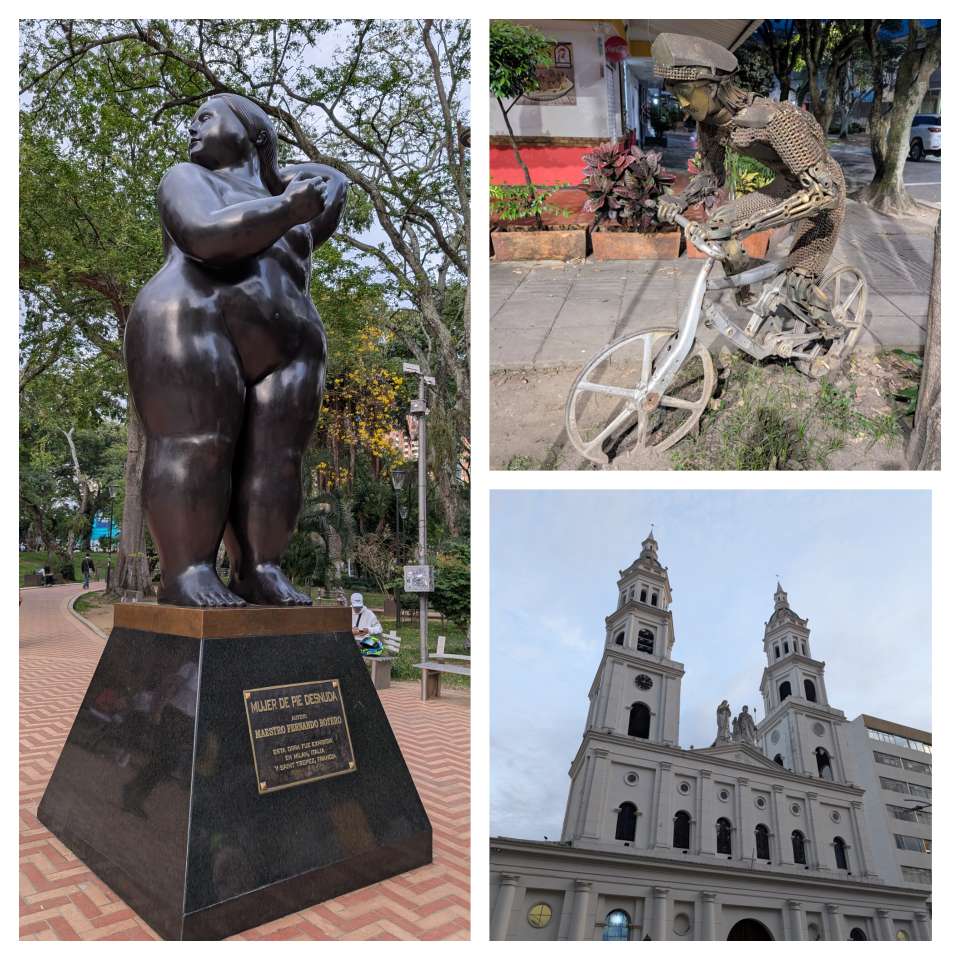
In some ways I felt a bit sad. I had spent two months in this beautiful country. Whilst it wasn’t love at first sight, Colombia won me over, and I felt I knew it better than other places I visited. I still had places I wanted to see, and so many unanswered questions about the history. At the same time, I was also feeling excited. There was so much to explore in Panama!
The next day, in the very early morning hours, I said my (somewhat grumpy) goodbye to Colombia, and boarded a plane to Panama City.